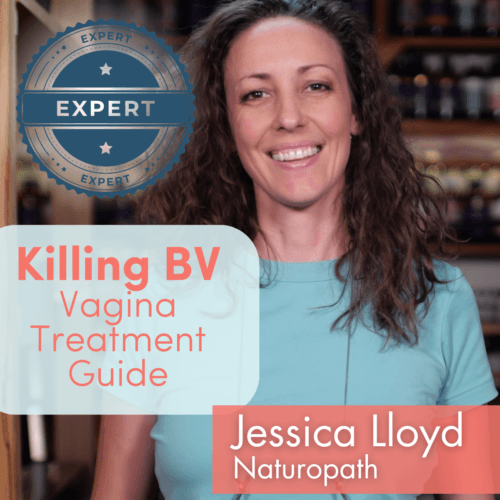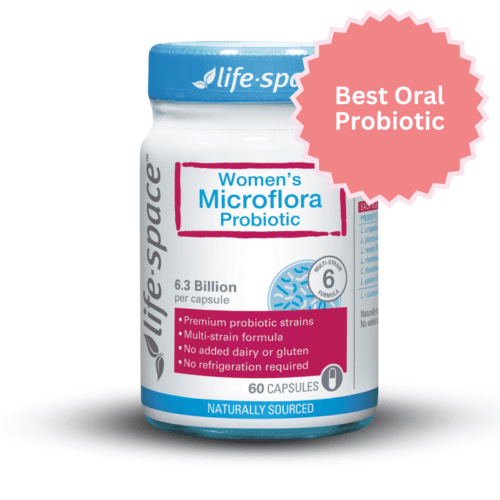Fannyhessea (Atopobium) vaginae is an anaerobic, gram-positive opportunistic bacteria. Fannyhessea was previously called Atopobium vaginae, discovered in 1999 using microbial DNA testing.
While rarely found in healthy vaginas, F. vaginae has been implicated in conjunction with Gardnerella vaginalis in recurrent bacterial vaginosis (BV). Various researchers have put the rate of F. vaginae occurrence in BV at 50 per cent (Burton), 70 per cent (Ferris), and over 95 per cent (Verhelst et al and Verstraelen et al).
F. vaginae develop biofilms, making up to 40 per cent of the biofilms found in BV-affected vaginas, with 60-95 per cent G. vaginalis and less than five per cent lactobacilli.
F. vaginae is a fastidious grower, which means the circumstances in which it will grow properly are very narrow. This means it is not often detected via normal cultures. The genus contains organisms that were formally known as Lactobacillus species, which could confuse tests.
F. vaginae can be transmitted sexually, via oral or hand-to-genital contact (so can be transmitted to someone who has never had penetrative sex) as well as penis-in-vagina sex.
Before F. vaginae was isolated, the Aptopium genus had only been detected in pelvic and dental abscesses, abdominal wounds and human faeces. It has also been found in a tubo-ovarian abscess and was noted as a cause of uterine lining inflammation.
Treatment notes on antibiotics for F. vaginae
Medical treatments are typically antibiotic-based, with clindamycin and metronidazole the two most commonly prescribed for BV. All previously identified nine strains of F/A. vaginae are highly resistant to nalidixic acid and colistin. All lactobacilli are resistant to metronidazole.
Metronidazole
- A few strains of F. vaginae have decreased sensitivity to metronidazole.
- Metronidazole is only active against F. vaginae at very high concentrations and is only partially effective against G. vaginalis.
- Metronidazole has no effect on lactobacilli
- Susceptibility to metronidazole is variable with minimum inhibitory concentrations ranging from 8 to 256 µg/mL
Clindamycin
- Clindamycin works on F. vaginae in a lower dose
- Clindamycin is active against G. vaginalis
- Clindamycin affects lactobacilli
- Steep rise in the percentage of women with at least one clindamycin-resistant strain after treatment with clindamycin
- Inhibits the growth of all tested strains in one experiment with minimum inhibitory concentrations below 0.125 µg/mL
Nifuratel
- Nifuratel may present a treatment option, as in vitro, it inhibits the growth of F. vaginae at low concentrations
- Nifuratel is active against G. vaginalis
- Nifuratel does not affect lactobacilli
- Inhibits the growth of all tested strains in one experiment with minimum inhibitory concentrations ranging from 0.125 to 1 µg/mL
Antibiotic regime as per medical guidelines
- Oral metronidazole 500mg twice daily for seven days OR
- Vaginal metronidazole 0.75 per cent, one applicator (5g) once a day for five days OR
- Vaginal clindamycin cream 2 per cent, one applicator (5g) at bedtime for seven days OR
- Tinidazole orally 2g per day for two days OR
- Tinidazole 1g orally once per day for five days OR
- Clindamycin 300mg orally twice daily for seven days OR
- Clindamycin ovules 100mg vaginally once at bedtime for three days
Treatment recommendations
- A DNA test both before and after treatment to look for both G. vaginalis and A. vaginae is pertinent
- Treatment is recommended for all symptomatic pregnant women
- Recommended regimes are all equally effective
- Creams are oil-based and may affect latex condoms and diaphragms
What studies tell us about F. vaginae
The presence of F. vaginae is a useful diagnostic marker when testing for BV. F. vaginae is almost never present without G. vaginalis or BV, while G. vaginalis can be present and not cause BV.
One study of 358 women with abnormal discharge or vaginal odour looked into the roles of G. vaginalis and F. vaginae after metronidazole. After the antibiotic treatment, 50 per cent of the group was found to have normal flora, 10 per cent were intermediate, and 39 per cent had BV as per Nugent Score criteria.
Real-time PCR assays found that 99 per cent of the BV group had F. vaginae present, however so did 66 per cent of the normal flora group. F. vaginae, however, was highly specific to the BV group, with 96 per cent detection levels in this group, and only 12 per cent in the non-BV group. This means that the presence of F. vaginae is a better indicator of BV than G. vaginalis.
Study
The association of Atopobium vaginae and Gardnerella vaginalis with bacterial vaginosis and recurrence after oral metronidazole therapy
An Australian study has suggested that Atopobium vaginae may play an important role in recurrent BV, as it is almost always present in the vaginal flora of those with BV, but almost never without. A positive test for A. vaginae predicted a greater BV recurrence rate than the presence of just G. vaginalis in women treated with standard metronidazole therapy.
The cross-sectional study ran over one year, examining women with abnormal vaginal discharge or odour. Those with significant Nugent scores or Amsel criteria for BV were treated with metronidazole, 400mg twice daily for seven days, then had a check-up at one, three, six and twelve months, or at recurrence.
Key findings of the study include:
- A. vaginae is more specific for BV
- G. vaginalis was detected in 100 per cent of women with recurrent BV
- A. vaginae was found in 75 per cent of women with recurrent BV
- More organisms were found in women with recurrent BV
- A. vaginae was very rarely detected without G. vaginalis present
- Women in whom both microbes were found had higher rates of recurrent BV (83 per cent) than those infected with just G. vaginalis (38 per cent)
References1–4
- 1.Bradshaw CS, Tabrizi SN, Fairley CK, Morton AN, Rudland E, Garland SM. The Association ofAtopobium vaginaeandGardnerella vaginaliswith Bacterial Vaginosis and Recurrence after Oral Metronidazole Therapy. J INFECT DIS. Published online September 15, 2006:828-836. doi:10.1086/506621
- 2.Jovita MR, Collins MD, Sjödén B, Falsen E. Characterization of a novel Atopobium isolate from the human vagina: description of Atopobium vaginae sp. nov. International Journal of Systematic and Evolutionary Microbiology. Published online October 1, 1999:1573-1576. doi:10.1099/00207713-49-4-1573
- 3.Polatti F. Bacterial Vaginosis, Atopobium vaginae and Nifuratel. CCP. Published online February 1, 2012:36-40. doi:10.2174/157488412799218824
- 4.De Backer E, Verhelst R, Verstraelen H, et al. Antibiotic susceptibility of Atopobium vaginae. BMC Infect Dis. Published online March 16, 2006. doi:10.1186/1471-2334-6-51
Get a fresh perspective with a qualified, experienced vulvovaginal specialist naturopath.
This product has multiple variants. The options may be chosen on the product pageThe most comprehensive vaginal microbiome test you can take at home, brought to you by world-leading vaginal microbiome scientists at Juno Bio.
Easy-to-use BV and AV treatment program.
Promote and support a protective vaginal microbiome with tailored probiotic species.





